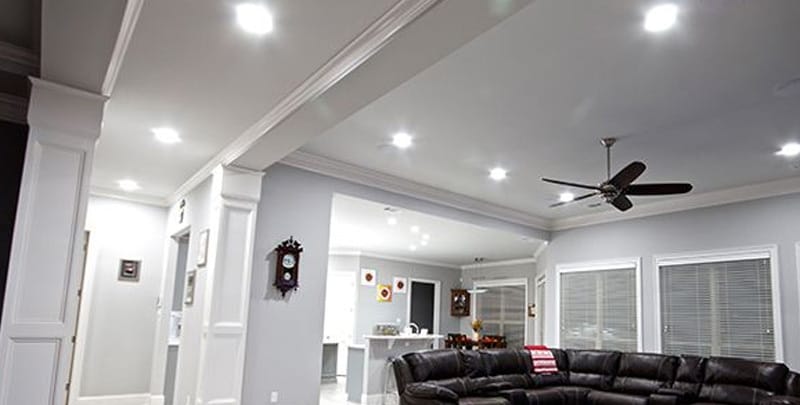
The Importance of Sustainability in Lighting
In a world that’s increasingly focused on sustainability, one area that deserves our attention is lighting. Eco-friendly LED lights have become a pivotal solution in our quest for more sustainable living.
They offer many benefits, with energy efficiency at the forefront. This comprehensive guide will delve into everything you need about eco-friendly LED lights.
We’ll cover everything from understanding how they work to making informed choices when purchasing and installing them.
By the end of this article, you will know to switch to eco-friendly LED lighting and contribute to a greener future.
What Are Eco-Friendly LED Lights?
Eco-friendly LED lights (or Light Emitting Diode lights) represent a revolutionary advancement in lighting technology designed with sustainability in mind.
These lights operate on a fundamentally different principle than traditional light sources of incandescent and fluorescent bulbs. Understanding what makes them eco-friendly involves exploring their work and environmental impact.
Definition and Operation
At their core, LED lights are semiconductors that emit light when an electrical current passes through them. Unlike incandescent bulbs, which generate light by heating a wire filament until it glows, LEDs produce light through electroluminescence. This process involves the movement of electrons within the semiconductor material, emitting photons or light particles.
Eco-Friendliness in Lighting
The eco-friendliness of LED lights stems in integral part from several key attributes:
- Energy efficiency: LED lights are exceptionally energy-efficient. They convert a significant portion of their electrical energy directly into light, minimising wasted energy as heat. In comparison, traditional incandescent bulbs primarily generate heat, with only a tiny fraction of energy transformed into visible light. This energy efficiency translates into substantial reductions in electricity consumption.
- Longevity: LED bulbs have an impressive lifespan. They can last up to 50,000 hours or more, depending on the quality of the bulb and usage patterns. In contrast, incandescent bulbs typically burn out after around 1000 hours. The extended lifespan of LED lights reduces the frequency of replacements, which is not only cost-effective but also environmentally responsible, as it reduces the number of bulbs discarded.
- Reduced carbon footprint: The energy efficiency of LED lights has a direct impact on reducing greenhouse gas emissions. Less energy consumption means lower carbon dioxide (CO²) emissions from power plants generating electricity. By choosing LED lighting, individuals and businesses can contribute to mitigating climate change and reducing their overall carbon footprint.
- Mercury-free: Unlike some fluorescent lighting options, such as Compact Fluorescent Lamps (CFLs), LED lights do not contain hazardous materials like mercury. It makes LED bulbs safer for both human health and the environment. Disposing of LED bulbs does not pose the same environmental risks associated with the improper disposal of mercury-containing bulbs.
In summary, eco-friendly LED lights are a sustainable choice due to their energy efficiency, longevity, reduced environmental impact, and absence of hazardous materials. They represent a significant step forward in lighting technology, aligning with the global push for more sustainable lighting and energy-efficient solutions in our everyday lives.

Advantages of Eco-Friendly LED Lights
Eco-friendly LED lights offer many advantages, making them an increasingly popular choice for lighting solutions in homes, businesses, and various applications.
Let’s explore these advantages in detail:
- Energy efficiency and cost savings: Eco-friendly LED lights are champions of energy-saving efficiency. They use up to 80% less energy than traditional incandescent bulbs and last significantly longer. This energy-saving efficiency translates into substantial cost savings on your energy bills over the long run. At the same time, LED bulbs may have a slightly higher upfront cost, but their durability and energy savings more than make up for them in reduced electricity bills.
- Lower energy bills: LED lights consume up to 80% less energy than incandescent bulbs. It substantially reduces electricity bills over time, making them a cost-effective choice.
- Long-term savings: LED bulbs may have a slightly higher upfront cost than incandescent, but their long lifespan more than compensates for the initial investment. With their extended durability, you’ll spend less on replacements, maintenance, and energy consumption, leading to significant long-term savings.
- Longevity and reduced maintenance: One remarkable feature of LED lights is their exceptional lifespan. On average, an LED bulb can last for 25,000 to 50,000 hours, or even more, depending on the quality of the bulb. Compare this to incandescent bulbs, which typically last around 1000 hours, and it’s evident that LED lights require much less energy and frequent replacement. It saves you money and reduces the environmental impact of manufacturing and disposing of bulbs.
- Reduced environmental impact: Traditional lighting options like incandescent bulbs contain hazardous materials such as mercury. Improper disposal of these bulbs can release toxic substances into the environment. In contrast, LED lights are free of dangerous materials, making them safer to use and dispose of. Their longer lifespan also means fewer bulbs are in landfills, reducing environmental harm.
- Lower carbon emissions: LED lights’ energy efficiency reduces the electricity required to produce light, resulting in decreased carbon dioxide (CO²) emissions from power plants. It is crucial in combatting climate change and promoting a more sustainable energy landscape.
- Mercury-free: Unlike fluorescent bulbs, LED lights contain no hazardous materials like mercury. It makes LED bulbs safer for both human health and the environment. Their disposal carries fewer environmental risks.
- Improved light quality and options: Eco-friendly LED lights offer improved light quality, with options for various colour temperatures and brightness levels. Whether you prefer warm, soft lighting for a cosy atmosphere or bright, excellent lighting for task-oriented spaces, LED bulbs provide flexibility to cater to your needs. They also offer instant brightness without the warm-up time required by some traditional bulbs.
- Various colour temperature: LED bulbs are available in a range of colour temperatures, allowing you to customise the ambience of your space. LED bulbs can accommodate your preferences, whether you prefer warm, inviting lighting for residential settings or excellent, crisp lighting for task-oriented areas.
- Instant brightness: LED lights provide instant illumination without the warm-up time required by some traditional bulbs. This instant-on feature enhances convenience and safety.
How to Choose the Right Eco-Friendly LED Lights
Selecting the right eco-friendly LED lights involves understanding a few key factors:
- Lumens vs watts: Instead of focusing solely on wattage, which measures energy consumption, look for lumens to gauge light output and brightness. A higher lumen count indicates a brighter light output. LED bulbs with high lumens and low wattage provide the best energy efficiency and intelligence.
- Colour temperature and its impact on ambience: LED bulbs come in various colour temperatures, measured in Kelvins (K). Lower Kelvins (around 2700K) produce warm, yellowish light suitable for ambient and residential settings, while higher Kelvins (5000K and above) create a calm, bluish light ideal for task lighting.
- Quality and reliability considerations: Opt for reputable top LED lamps and brands and check for certifications like Energy Star. High-quality LED lamps and bulbs last longer, provide consistent performance and come with warranties, ensuring a reliable investment.
- Dimming options and compatibility: If you require dimmable lighting, ensure the LED bulbs and dimmer switches are compatible. Not all LED bulbs work with all dimmers, so it’s essential to verify compatibility to avoid flickering or buzzing issues.
Installation and Maintenance
Installing eco-friendly LED lights is straightforward and can often be done as a DIY project.
However, consider the following tips:
Follow Manufacturer’s Instructions
- Ensure the fixtures are suitable for LED bulbs.
- Check for compatibility with existing dimmer switches.
How to Extend LEDs’ Lifespan
- Keep fixtures clean to prevent dust buildup.
- Replace any damaged or malfunctioning bulbs promptly.
- Be cautious when handling LED bulbs, as they are sensitive to excessive heat.

Eco-Friendly LED Lights and Sustainability
Eco-friendly LED lights play a pivotal role in sustainable living by lessening light pollution and reducing energy consumption, greenhouse gas emissions, and the need for frequent replacements.
They align with global efforts to combat climate change and promote responsible resource use.
Energy Star-certified LED light bulbs meet stringent energy efficiency and performance criteria set by the U.S. Environmental Protection Agency (EPA). Choosing Energy Star-certified bulbs ensures you’re making an environmentally conscious choice.
The longevity of LED bulbs significantly reduces the frequency of replacements. It saves you money and minimises the environmental impact of less waste with manufacturing, transportation, and disposal of bulbs.
Common Myths and Misconceptions
There are two myths about LED lighting that should be addressed here:
- Blue light: One common myth about LED lights is that they emit harmful levels of blue light. In reality, the blue light emitted by LEDs is well within safe levels and similar to that of natural light sources and daylight. It does not pose a significant risk to eye health or sleep patterns when used appropriately.
- Initial cost: While LED bulbs may have a higher upfront cost than traditional bulbs, their energy efficiency and long lifespan lead to substantial savings over the same amount of time. They are an investment that pays off through reduced energy bills and fewer replacements.
In Conclusion
Eco-friendly LED lights are a beacon of sustainability in the lighting world. Low energy consumption, efficiency, longevity, and reduced environmental impact make them a smart choice for residential and commercial applications.
By understanding how to choose, install, and maintain these lights, you can maximise their benefits, save money, and contribute to a greener future. It’s time to switch to eco-friendly LED lighting and illuminate your life efficiently and responsibly.
Please note: This information is provided for advice purposes only. Regulations differ from state to state, so please consult your local authorities or an industry professional before proceeding with any work. See our Terms & Conditions here.


